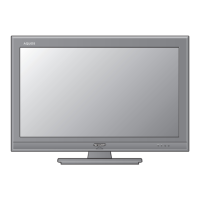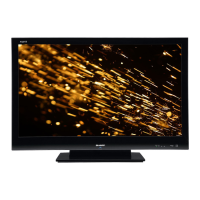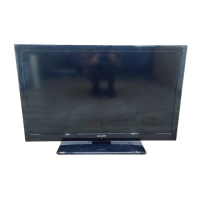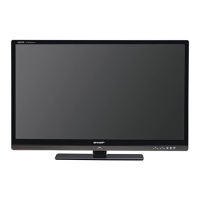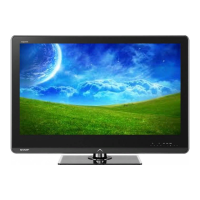36
LC-40LE732
LC-46LE732
MAJOR ICs INFORMATION
1. General ICs Information
DUNTKF915WE (Main Unit)
• IC 1505: HDMI Switch 3 inputs to 1 output.
Part number: BU16028KV
Sharp code: VHIBU16028K-1Q
http://www.rohm.com/products/databook/video/pdf/bu16006kv-e.pdf
Features:
• Supports 2.25 Gbps Signaling Rate for 480i/p, 720p, and 1080i/p
Resolution to 12-Bit Color Depth.
• Compatible with HDMI 1.3a.
• 5V Tolerance to all DDC and HPD_SINK Inputs.
• Integrated Switchable 50ΩΩReceiver Termination.
• Integrated DDC buffer.
• Integrated Equalizer circuit to adapt long cable.
• IC 2701 : Audio Power.
Part number: STA333BW13TR
Sharp code: VHISTA333BW-1L.
http://www.st.com/internet/com/TECHNICAL_RESOURCES/TECHNICAL_LITERATURE/DATASHEET/CD00166760.pdf
Features:
• Wide-range supply voltage, 4.5 V to 21.5 V.
• Three power output configurations:
o 2 channels of ternary PWM (2 x 20 W into 8 Ω at 18 V) + PWM output.
o 2 channels of ternary PWM (2 x 20 W into 8 Ω at 18 V) + ternary stereo line-out.
o 2.1 channels of binary PWM (left, right, LFE) (2 x 9 W into 4 Ω +1 x 20 W into 8 at 18 V).
• FFX with 100-dB SNR and dynamic range.
• Scalable FFX modulation index.
• Selectable 32- to 192-kHz input sample rates.
• I2C control with selectable device address.
• Digital gain/attenuation +48 dB to -80 dB with 0.5-dB/step resolution.
• Soft volume update with programmable ratio.
• Individual channel and master gain/attenuation.
• Dynamic range compression (DRC) or anti-clipping
mode.
• Audio presets:
o 15 preset crossover filters.
o 5 preset anti-clipping modes.
o Preset night-time listening mode.
• Individual channel soft/hard mute.
• Independent channel volume and DSP bypass.
• I2S input data interface.
• Input and output channel mapping.
• Automatic invalid input-detect mute.
• Up to 5 user-programmable bi-quads by channel.
• Three coefficients banks for EQ presets storing with fast
recall via I2C interface.
• Bass/treble tones and de-emphasis control.
• Selectable high-pass filters for DC blocking.
• Advanced AM interference frequency switching and noise suppression modes.
• Sub channel mix into left and right channels.
• Selectable high- or low-bandwidth noise-shaping topologies.

